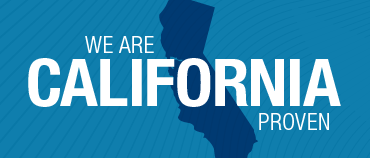There’s no question that healthcare is constantly transforming and evolving. Providers across the entire healthcare ecosystem are uniting to explore and refine care options with the goal to better impact the individuals they serve. At Netsmart, we have the unique opportunity to work closely and collaborate with organizations who are leading the way in transforming how healthcare is delivered.
Netsmart client Sharp HealthCare has established a modern approach to deliver palliative care that goes all-in for caring for individuals who are nearing the end of life and their loved ones.
The ways in which Sharp is addressing this care today is a tremendous shift from a decade ago. Historically, when caring for those with a chronic or terminal illness, primary care physicians would send patients home knowing that, over time, their condition would likely deteriorate so greatly that the patient would need to be admitted to the hospital. The worrisome part for physicians was that this progression would often cause patients to endure great pain or discomfort. They would have to wait for people to become much sicker before being able to intervene with aggressive tactics.
Sharp’s hospice group, however, knew there had to be a better way to avoid this type of suffering. They developed the Sharp Transitions Advanced Illness Management Program (Transitions) that takes an innovative approach to care for those with a chronic illness or a condition that eventually leads to hospice care.
The Transitions program focuses on proactively delivering care or services before individuals require skilled care or hospitalization. Its practices go beyond medical management and concentrate on anticipating events by knowing what’s likely the next natural phase of an illness or condition to deliver appropriate care or services within the patient’s home.
The Transitions program is based on four pillars: in-home disease management, medical prognostication, care for the caregiver and advance care planning. This foundation provides patients and their loved ones with a feeling of empowerment and enables them to be an active part in the management of the journey leading to the end of life.
“All of these areas are important to maintaining healthy families as an individual moves toward the end of life,” said Dr. Dan Hoefer, chief medical officer for outpatient palliative medicine at Sharp HealthCare who assisted in creating the Transitions program. “The program focuses not just on the patient and their disease, but also on their caregivers, families and communities. This focus is a key component in why we started this program.”
According to Hoefer, most pre-hospice patients would rather stay at home and continue to treat their illness aggressively rather than be admitted to a hospital. “About 70 to 80% of individuals want to be home during this time of life,” he said. “We want to manage these patients in the way that they prefer.”
The program aims to reshape how providers and clinicians think about care for those who are nearing the end of life. It focuses on the partnership between primary care providers, specialists, patients and families to create a system of care that treats the progression of chronic illness within the home environment, reducing rapid deterioration of an individual’s health and avoids the need for catastrophic care in an emergency department (ED) or hospital setting.
If needed, the program brings the ED to the patient, catching decompensations early and avoiding exacerbation. Patients still see their primary care and specialists’ physicians as needed, so it does not take them away from the care they need, but rather avoids the need for invasive care.
“With current construct of healthcare, you have to be broken to be fixed,” said Suzi K. Johnson, vice president of Sharp Hospice and Palliative Care. “Our program says we’ll help you not break in the first place.”
The program is designed to take a more practical attitude to deliver care up to the point when an individual requires a hospice setting. Understanding the typical advancement of illnesses or conditions allows Sharp’s providers to take preemptive measures that can improve or avoid certain symptoms altogether. The approach is preparing Sharp as the healthcare industry shifts toward value-based care and away from a reactive model of care through fee-for-service.
While the main goal of the program is to improve quality of life and care across the continuum, saving money is appearing to be a byproduct. Outcomes generated by the Transitions program certainly support this theory. As published in the Journal of the American Geriatrics Society, Sharp was able to demonstrate tens of thousands of dollars in costs savings per individual, without escalating care settings. They have also achieved single-digit numbers for hospital deaths.[1]
“We asked ourselves, ‘If we are more aggressive, can we manage patients upstream without them needing to set foot in the hospital?’” said Hoefer. “If you have a problem in a silo, you must look one, two or three silos back to see what contributed to it. When we think about it from a hospital readmission perspective, we help fix the problem of the hospital by keeping patients out of the hospital to start.”
Sharp has also taken steps to integrate care for the emotional needs of patients and their loved ones. Without support, some patients who move into hospice are not emotionally prepared. Focusing on patient, caregiver and family education throughout the program brings preparedness and understanding for what to expect at the transition to hospice and at the end of life.
“People on the Transitions program are well-aware, prepared, and unafraid,” said Hoefer. “When we’ve been talking about it for a while and openly, families are ready.”
The caregiver support provided by the program is also resulting in improved outcomes. As an illness becomes more complex, nurses and social workers step in at critical points for caregivers. According to Hoefer, their approach to support through care coordination, education and pre-bereavement counseling has resulted in fewer mental health obstacles for families and loved ones.
“The maze of healthcare is complicated, confusing and stressful. We work to reduce the psychological trauma from the caregiver perspective and deliver education and emotional support to patients as to why they are doing what they are doing, why it’s appropriate,” said Hoefer. “We are turning to family members who have been great advocates for their loved ones, allowing them to do what the patient wishes.”
Johnson says this type of support also extends program benefits to staff and clinicians.
“For nurses and social workers, to be able to enter into a patient and family’s life at a point where a disease may be beginning to overwhelm them and guide them on what’s coming next can be rewarding,” Johnson said. “It increases satisfaction among our staff and supports the feeling we are doing the right thing. “
To manage this unique concept of care, Sharp developed a palliative care business unit using a Netsmart electronic health record (EHR) infrastructure similar to their hospice infrastructure. This technological connection and alignment between care settings support the seamless transition of care expected when one is nearing the end of life. It also creates clear communication between care settings, creating harmony with nurses and caregivers while helping to facilitate the best clinical judgment.
Additionally, it nurtures staff satisfaction as clinicians have the familiarity of shared systems and have access to the same information, regardless of setting. Under its current construct, palliative care is flowing to hospice which flows to bereavement, creating a true integration of care for everyone involved.
“It’s helpful for our clinicians because we all use the same platform; everyone is familiar with it,” Johnson said. “We utilize customized clinical and communication notes, and we gather utilization data from our system, so our Netsmart technology is an important tool for us.”
When it comes to managing the transition from palliative to hospice care like that in the Sharp program, Hoefer suggests providers think differently and reexamine how patients are managed. He encourages proactive management, the use of anticipatory guidance as well as the engagement and guidance of patients and their family members.
This new attitude is certainly making waves throughout the palliative and hospice care industry. In early 2019, Sharp was awarded the Hearst Health Prize. In partnership with the Jefferson College of Population Health, Hearst recognized the Transitions program and its efforts to make remarkable strides in managing population health. This recognition provides a national platform to showcase successful healthcare programs and to rapidly share best practices across the industry.
Sharp’s efforts for achieving high standards for quality of care in the Transitions program also earned them a 2018 Certificate of Distinction from the Joint Commission.
“We certainly extend a hearty congratulations to Sharp HealthCare for earning prestigious recognition of their hard work and dedication to taking a truly holistic approach to provide care and support not only to individuals but also extending it to their families and loved ones,” said Stacie Stark, Netsmart director, client engagement. “Combine that with the tremendous results they are seeing from the provider perspective with reduced hospitalizations, lower costs, enhanced staff satisfaction, etc., they have an approach that’s truly a win-win.”
As for Sharp, they will continue treading their own path on their journey to creating the best healthcare experience possible for everyone involved.
“Our patients are individuals, and we want to empower them and their caregivers by providing personalized and patient-centered care,” said Johnson. “It’s our mission to bring quality care to our patients in their own homes and on their own terms with available support to care for everyone during this most precious time of life. This is the future of healthcare from our perspective.”
[1] J. Brian Cassel, PhD,* Kathleen M. Kerr, BA, Donna K. McClish, PhD, Nevena Skoro, MPH, Suzanne Johnson, RN, MPH, Carol Wanke and Daniel Hoefer, MD, Effect of a Home-Based Palliative Care Program on Healthcare Use and Costs, (New York, Journal of American Geriatrics Society, 2016), https://onlinelibrary.wiley.com/doi/full/10.1111/jgs.14354








